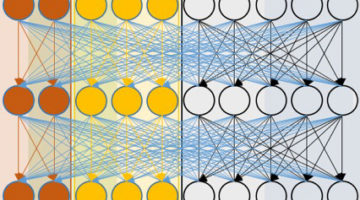Researchers showed that machine learning can predict noisy fluctuations in the size of beams generated by synchrotron light sources and correct them before they occur. The work solves a decades-old problem and will allow researchers to fully exploit the smaller beams made possible by recent advances in light source technology. Read more »![]()
![]()
Machine Learning Enhances Light-Beam Performance at the Advanced Light Source
Researchers have successfully demonstrated how machine-learning tools can improve beam-size stability via adjustments that largely cancel out these fluctuations—reducing them from a level of a few percent down to 0.4 percent, with submicron precision. The demonstration shows that the technique could be viable for scientific light sources around the globe. Read more »
Scientists Use Machine Learning to Span Scales in Shale
Machine-learning techniques have been used to integrate fine- and large-scale infrared characterizations of shale—sedimentary rocks composed of minerals and organic matter. Understanding shale chemistry at both the nano and mesoscale is relevant to energy production, climate-change mitigation, and sustainable water and land use. Read more »


